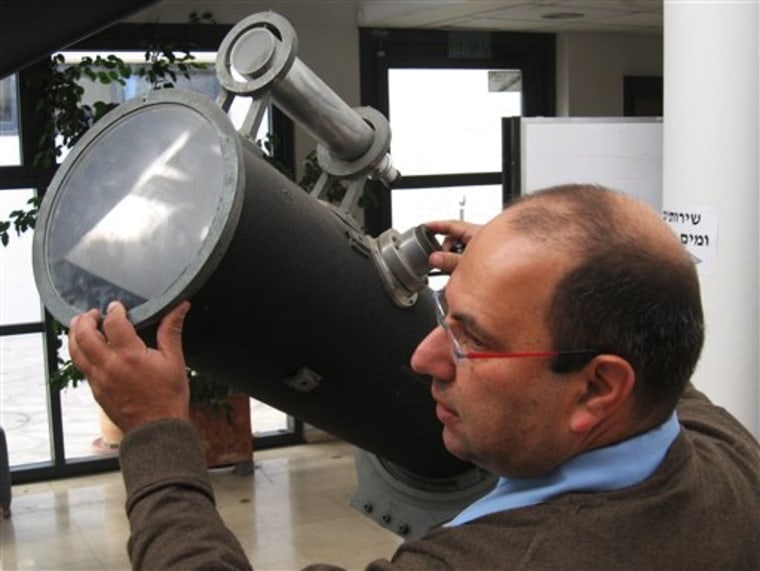Albert Einstein's long-lost telescope, forgotten for decades in a Jerusalem storage shed, goes on display this week after three years and $10,000 spent restoring the relic.
The old reflecting telescope is cumbersome by modern standards, but a demonstration for The Associated Press showed it still works well enough to see five of Jupiter's moons and the cloud bands on the huge planet.
The legendary physicist who famously theorized relations among energy, speed and mass received the telescope in 1954, the year before he died. It was a gift from a friend named Zvi Gizeri, who probably made it himself, said officials at the Hebrew University in Jerusalem where the public will be able to view the telescope starting Thursday.
Einstein, who was a co-founder of the Hebrew University, willed his records to the school. There were rumors through the years that he also left a telescope, but it took modern sleuthing and some luck to find it.
The long black tube about eight inches in diameter and 6 feet long stands on a base experts say may have been taken from the German army. It was this unique base, recognizable in a picture of Einstein with the telescope, and a signature from Gizeri on one of its mirrors, that confirmed its authenticity in 2004, when a biologist named Eshel Ophir made the connection.
The forgotten telescope was first discovered in a storage shed in the late 1990s by a computer specialist at the Hebrew University. But he did not recognize it as Einstein's, and left it in the shed.
Ophir made the connection by accident, initially mistaking another forgotten telescope for the famous physicist's. After searching through the archives and photos, Ophir realized the real Einstein telescope was actually the one his colleague had found unceremoniously years earlier.
Ophir said he immediately took the telescope to the university's Meyerhoff Youth Center, where he was serving as director, to protect and clean it.
With the exception of a new eyepiece, the rest of the device, from lenses to optics, is original.
It is unlikely, though, that a theoretician like Einstein, who won a Nobel Prize in 1921 for his theory of relativity, would have had much use for a telescope in his work.
"I don't think anybody investigated Einstein's star-gazing habits," said Dvora Lang, the current director of the Meyerhoff Youth Center. "But it was for his pleasure, not for his work."
The telescope goes on display Thursday at the Meyerhoff center in conjunction with Researchers Day, when schools across Europe and Israel will open their laboratory doors to the public.
The newly unveiled telescope will not be housed with the rest of Einstein's documents at the Jewish National and University Library but will remain in the Meyerhoff center for use by students.
Lang said she hoped by looking into the telescope of one of the greatest scientists of the 20th century, a new generation of Israeli children would be inspired to learn more about science.
"This is setting them on fire," she said.
